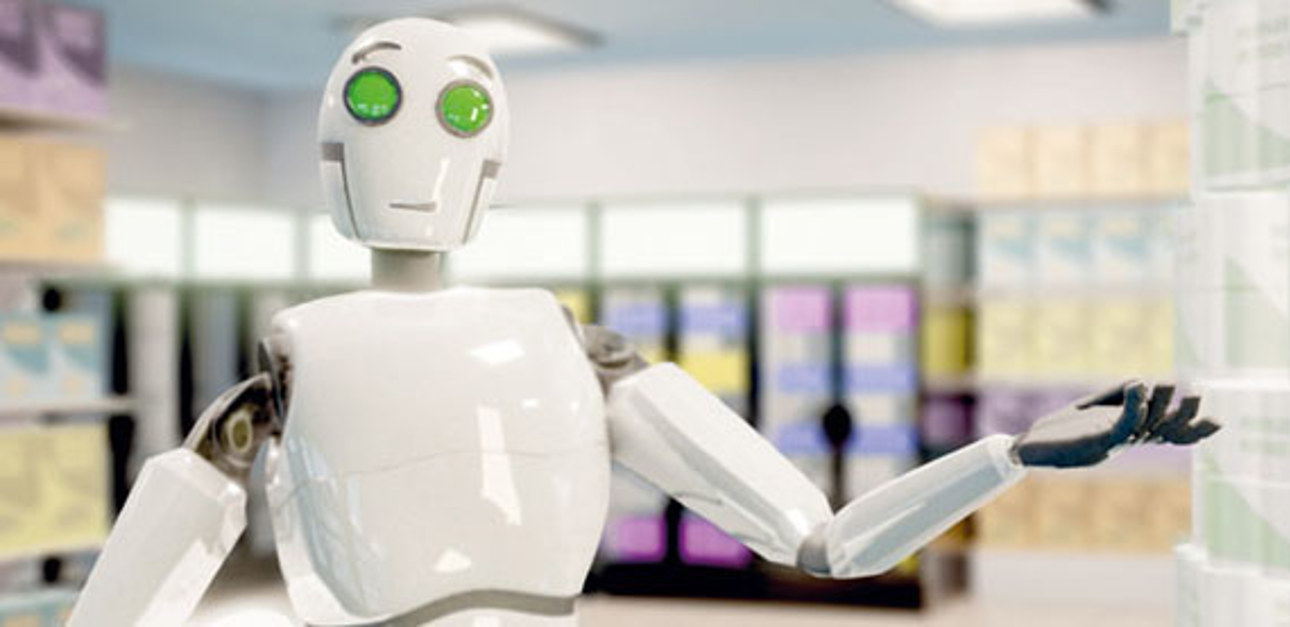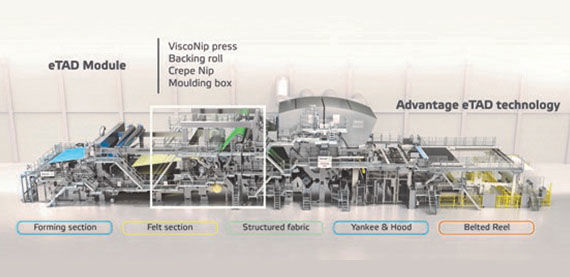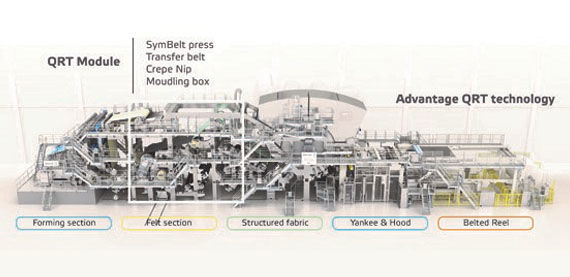The future might surprise you
Jun 11, 2019
As Darwin is alleged to have said: “It is not the strongest, nor the most intelligent that survives. It is the one that is most adaptable to change.” Surviving is about foreseeing the future. Succeeding is being there already. Get set for tomorrow’s needs with flexible hybrid technology!

The tissue industry is facing new and stricter demands from modern consumers. They’re calling for new products with various paper properties at the same time as they’re pushing sustainability to the top of the agenda. This is pressurizing tissue producers to be more flexible, deliver different grades and develop new products.
The recently developed hybrid technologies Advantage NTT, QRT and eTAD provide an innovative and more flexible way of producing a wide variety of premium and ultra-premium tissue products with low energy and fiber consumption. A wider range of companies and market segments can now access premium and ultra-premium tissue products with high bulk, softness and absorbency at a relatively low operational cost.
Valmet’s new hybrid technologies bring a new dimension to tissue making.
Rush forward
The recipe for reaching the highest bulk and absorbency is usually to avoid pressing, and to use hot air to dry the sheet. But today it is possible to achieve premium and ultra-premium structured tissue products thanks to these new hybrid technologies. The secret behind Advantage QRT and eTAD lies in the combination of pressing and “Rush Transfer”. Simply explained, the sheet is first dewatered by pressing to increase dryness and thereby reduce energy consumption. The sheet is then transferred to a structured fabric with the assistance of a nip and speed difference. The speed difference is, along with a subsequent molding step, the key to creating sheet structure and bulk.


Both the QRT module and the eTAD module utilize Rush Transfer but in slightly different ways.
High absorbency and stretch
Absorbency rate is a key selling point and a differentiator for tissue producers. The product created in the Advantage QRT and eTAD process offers high stretch and great absorbency. This feature makes it especially suitable for high grammage products like kitchen rolls and towel, but is also perfect for bath tissue. The caliper is already created in the tissue machine, and embossing is not needed.
Advantage NTT the most flexible tissue machine in the world?
The NTT machine can be operated in both plain and textured modes. The key is the changeable belt. Operating with a plain belt produces conventional tissue. A fine belt generates more bulk and is suitable when softness is demanded. A coarse belt enables the production of textured tissue with high bulk and improved water absorbency compared with dry crepe tissue. And it is easy to swing between production modes with a belt change – which can be done in a few hours. Another unique feature is the option to create your own belt patterns and already imprint the desired design in the tissue machine. This opens endless potential for product differentiation, as well as to operate within a wide range of basis weight and products from facial to towel.
Plain mode and remarkable production capacity
NTT technology has a powerful dewatering system which enables not only energy savings but also very high production volumes. At high basis weight, drying capacity is normally the bottleneck for increased production in other tissue-making processes. However, the NTT machine enables very high press dryness, which can augment production capacity by about 30 percent. Continuous production of 180-185 tonnes per day on a 100-inch-wide machine is now a reality.
Textured mode for high bulk and softness
In textured mode, NTT technology can achieve a bulk increase of about 50-80 percent compared with conventionally produced paper, depending a little on basis weight and belt design. Most of the European conventional products provide softness in the range of 85-90 TSA. With NTT technology, softness values between 90 and 97 can be achieved. The highest softness can be found in 2-ply products with low tensile strength.
Hybrid technologies combine sustainability, flexibility and high quality
For more than 40 years there have been two tissue making concepts on the market – conventional dry crepe and through air drying machines. Valmet’s new hybrid technologies plug the gap and bring a new dimension to tissue making. Thanks to their flexibility, it is possible to produce several grades and qualities in the same machine, ranging from premium to high and ultra-premium tissue. The capability of producing different grades in the same process will give a competitive advantage and make it possible to be ready for any changing market demands. It will also open the way to entering new market segments and for product differentiation. Compared with other processes producing the same quality, hybrid concepts can be operated with low energy and fiber consumption, with the added benefit of a low operation cost.
TEXT Danilo Marcos
Article published in Forward magazine 2/2019.